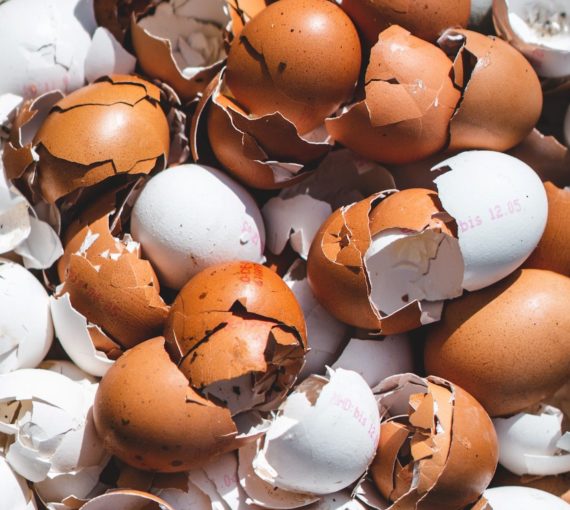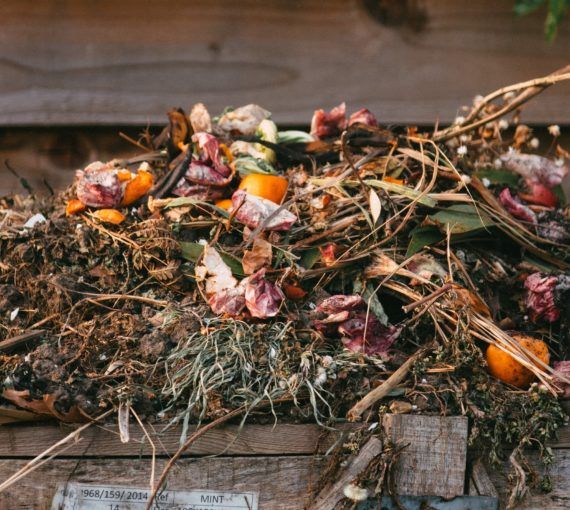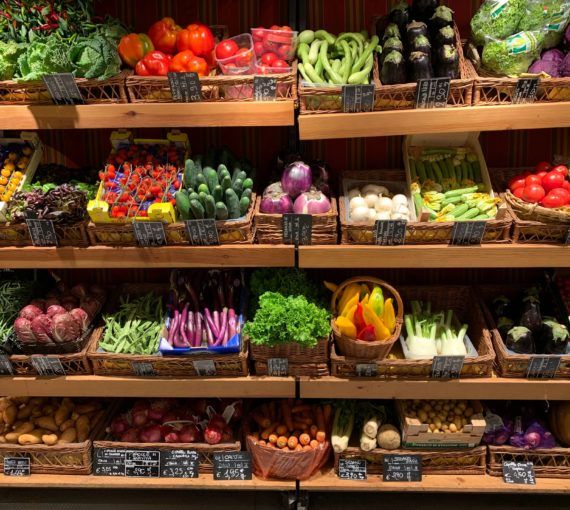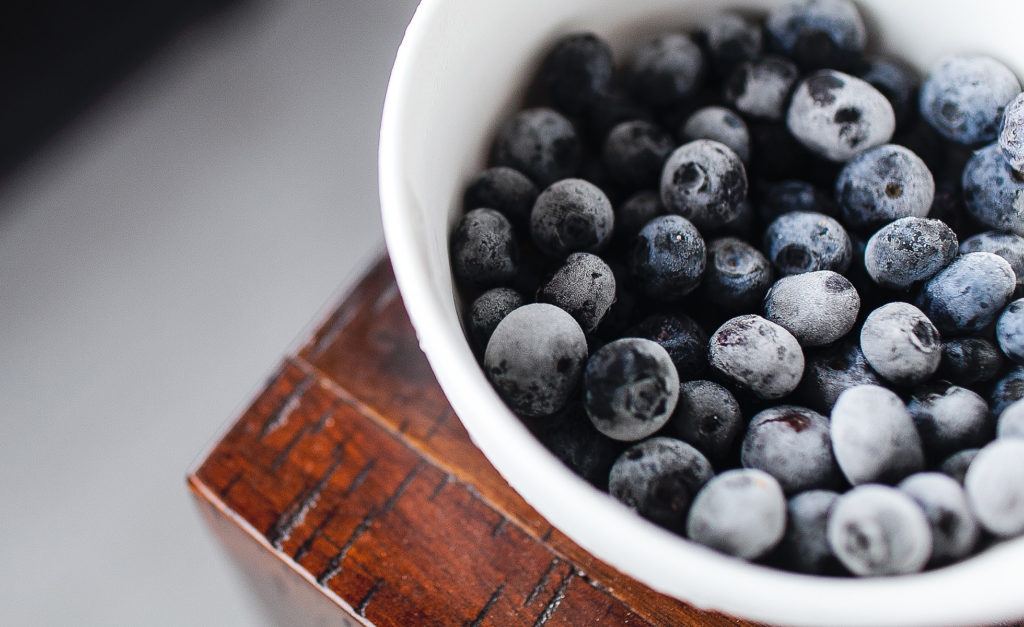
Freezing food doesn’t take a lot of time, extends the life of what isn’t getting eaten right away and reduces waste.
Get the most out of your groceries and garden! Freezing fruits, vegetables and leftovers is an easy way to reduce food waste, save time when cooking and save money.
Benefits of freezing fruits and vegetables
Eat locally and seasonally
Food grown locally produces fewer transportation emissions, is fresher and supports local farmers. As the distance food travels decreases, so does the need for processing and refrigeration to reduce spoilage. Local, seasonal foods are at peak freshness. That means better taste and higher nutrition compared to out-of-season food that has travelled long distances.
With a little preparation and the right techniques, you can preserve your favourite local, seasonal foods to enjoy year-round without compromising on quality or flavour.
Reduce food waste
Every year, a staggering amount of food ends up in landfills. The average household in Canada wastes 140 kilograms of food per year — a value of more than $1,300 annually. Though all types of food are wasted, the greatest proportion are vegetables and fruit. By freezing those you won’t consume immediately, you can make them last longer and ensure they don’t go to waste.
Tips for freezing fruit
1. Choose the right fruits
Almost all fruits can be frozen, but some fare better than others. Berries, bananas and stone fruits like peaches and cherries freeze well. Avoid freezing fruits with high water content, such as watermelons. They can become mushy when thawed.
Choose local, organic fruit whenever possible.
2. Preparation is key
Before freezing, wash and dry fruits thoroughly. Remove pits or large seeds. Peel bananas.
Compost or upcycle fruit scraps.
3. Try flash freezing
To prevent fruits from sticking together, spread them out on a baking sheet and freeze until solid. Transfer into an airtight container or silicone freezer bag.
Examples of methods to freeze fruits
Apples
Make apple sauce! It’s sweet, delicious, nutritious and freezes well.
- Peel and core apples.
- Steam until tender (three to four minutes).
- Purée with a dash of cinnamon.
- Freeze in individual glass jars or in parchment-lined muffin tins.
- Transfer to large glass jars.
Peaches
Frozen peaches can be used in baking, smoothies or as a kid-pleasing treat with yogurt and honey year-round.
- Cut an “X” in the top of each peach (makes peeling simple).
- Blanch whole for two minutes.
- Peel, slice, freeze flat and store.
- Peaches can also be frozen in white grape juice.
Tomatoes
Freezing tomatoes is a little more time-consuming than other fruits, but worth it! Sweet summer harvests make amazing tomato sauce mid-winter.
- Scour large tomatoes at the bottom with an X.
- Blanch for one minute.
- Peel skins (they should practically fall off after blanching).
- Halve, remove seeds and squeeze out juice.
- Freeze in individual glass containers.
Tips for freezing vegetables
1. Choose the right vegetables
Broccoli, cauliflower, green beans, peas and carrots freeze well. Leafy greens, like spinach and kale, can also be frozen but should be blanched first.
Choose local, organic vegetables whenever possible.
2. Blanch before freezing
Blanching stops enzymes that lead to deterioration and destroys micro-organisms on the vegetables’ surface. Blanching also helps preserve colour, flavour and nutrients.
To blanch, boil the produce for a couple of minutes. Immediately submerge it in ice water for the same amount of time, to stop the cooking. Two minutes is average — you want to kill the enzymes but not overcook the food. Where applicable, dry well before freezing.
3. Preparation is key
Before freezing, wash and dry vegetables thoroughly. Consider chopping them into the sizes you’ll need for future meals. This will reduce future prep time and optimize freezer storage.
Compost or upcycle vegetable scraps.
Examples of methods to freeze vegetables:
Broccoli
Fresh broccoli is available in the supermarket year-round, but frozen local broccoli may have more nutritional value and better flavour. Soaking in brine removes any insects hiding in the florets.
- Separate into florets and remove leaves.
- Soak in brine for five minutes – five ml (four tsp) salt to 4.5 l (one gallon) water.
- Rinse.
- Blanch for three minutes.
- Freeze flat.
- Transfer for storage.
Green beans and snow peas
Freshly frozen green beans and snow peas are great for stir-fries.
- Snap and string beans.
- Blanch for one minute.
- Freeze flat.
- Transfer for storage.
Kale
Freezing puréed kale or other leafy greens makes it easy to toss a few tablespoons into pasta sauces, soups and other recipes.
- Pull leafy greens away from centre stems.
- Purée with a splash of olive oil.
- Transfer to ice cube trays to freeze.
- Transfer to glass jar for storage.
Pumpkin
When preparing pumpkin purée for fall pies, freeze portions for winter muffins or pies.
- Roast pumpkin at 175 degrees C (350 degrees F).
- Purée.
- Freeze 225 ml (one cup) portions in lined muffin tin.
Summer squash
Great for incorporating squash into baking and other recipes year-round.
Cubed:
- Dice, de-seed, cube.
- Blanch cubed squash for two minutes.
- Freeze flat.
- Transfer for storage.
Shredded:
- De-seed and shred.
- Steam for one to two minutes.
- Freeze patties in parchment paper–lined muffin tin.
- Transfer for storage.
How to store frozen produce
- Remove excess air. To prevent freezer burn, remove as much air as you can from the silicone freezer bag or use an airtight container.
- Label and date. Always label containers or bags with the name of the produce and the date it was frozen.
- Optimize freezer storage. Group similar items in the freezer. Place produce that needs to be eaten first in front.
- Portion produce. Freeze fruits and vegetables in portions you use for meals. You’ll avoid defrosting more than you need and minimize waste.
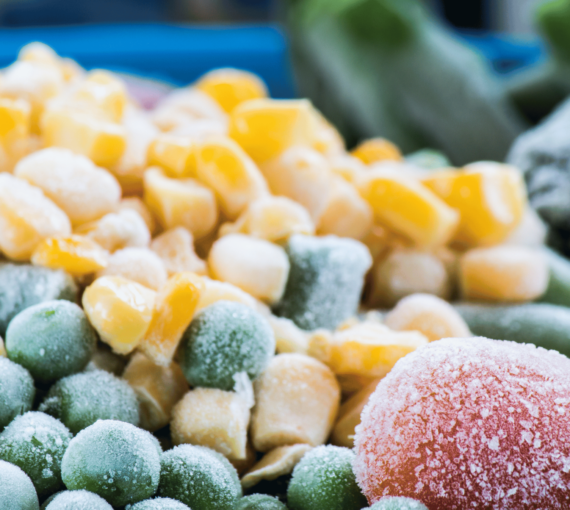
Freezing FAQs
How long will frozen food last in the freezer?
In optimal conditions, frozen food will be safe to consume indefinitely. But freezer temperatures fluctuate. A variety of factors affect their ability to maintain a consistent temperature.
To ensure quality and safety, consider these recommended timeframes for consuming frozen food:
- Fruit: Up to six months.
- Vegetables: Up to a year.
- Uncooked meat: Four months to a year.
- Cooked meat: Two to three months.
- Cooked poultry: Four months.
- Uncooked poultry: Nine months to a year.
- Raw and cooked fish: Two to four months
Use your best judgement. If you’re doubtful about whether something is safe to consume, compost it.
Can you re-freeze thawed food?
Only cooked thawed food can be refrozen and only if it hasn’t been sitting at room temperature for more than two hours.
Why is my produce mushy after thawing?
During freezing, water in fruits and vegetables expands, causing ice crystals to puncture and break cell walls. The damage means a mushy consistency. To reduce the likelihood of mushy produce, freeze it as quickly as possible and make sure your freezer is set to a cooler temperature. Thoroughly drying washed produce before freezing will also help.
How to thaw frozen food
Thawing fruits
Fruits can be thawed in the refrigerator, at room temperature or submerged in a sealed bag in room temperature water for a quicker thaw (check and replace water as needed). If you’re planning to use fruits in smoothies or baking, you can often use them directly from the freezer without thawing. (Keep in mind that baking times may vary.)
Thawing vegetables and herbs
For best results, thaw vegetables in the refrigerator overnight. This gradual thawing helps maintain texture. If you need to use them immediately, you can also thaw them under cold running water. Many frozen vegetables can be added directly to soups, stews and stir-fries without thawing. (Cooking times may vary.)
Avoid microwave thawing
Though microwaving may seem like a quick way to thaw produce, it can often lead to uneven thawing and loss of texture. Use the defrost setting and monitor closely to avoid over-thawing.
How to freeze leftovers
It can be hard to accurately estimate how much a recipe will yield. Or you might have excess if a recipe needs only a small quantity of a specific ingredient. It’s not unusual to end up with more leftovers than you can reasonably eat within a safe timeline.
Tips for freezing leftover meals:
- Cool food thoroughly before freezing. Allow hot food to cool to room temperature before freezing. Placing it directly in the freezer can raise the freezer’s internal temperature and affect other stored food.
- Portion wisely. Divide leftovers into meal-sized portions before freezing. This makes them easier to thaw and prevents waste.
- Label and date. Always label your containers or bags with the name of your leftovers and the date it was frozen.
- Flat freeze certain foods. Freeze liquid leftovers, such as soups and stews, in thin layers in freezer bags. That will speed up the freezing and thawing process and save space.
Tips for freezing leftover ingredients:
- Sauces. Pour small portions of leftover sauces (e.g., tomato paste, pesto, soup stock, minced garlic, etc.) into ice cube trays. Once frozen, transfer the cubes to a labelled container or pop what you need for a recipe out of the tray.
- Herbs. Wash and dry herbs thoroughly before freezing. Chop finely and freeze in ice cube trays with filtered water, olive oil or broth.
- Grains and pasta. Cooked grains (e.g., rice, quinoa, barley, etc.) and pasta can be frozen in portion-sized containers or bags. Remove as much air as possible to prevent freezer burn.
- Bread and baked goods. Pre-cut and portion. Store in airtight containers.
- Dairy products. Hard cheese can be grated and frozen in containers. Milk (including plant-based), cream and yogurt can be frozen but may separate when thawed (best used for baking or cooking). Store in airtight containers or ice cube trays.

